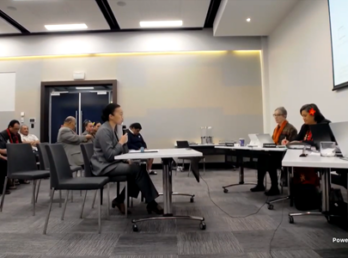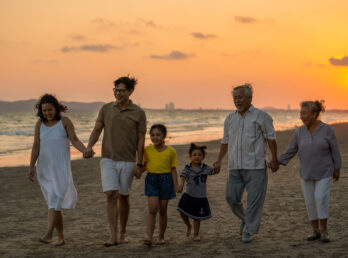Special Guardianship in the case of Re WH [2021] NZFC 2090 articles
Date
1 Nov 2021
Related Expertise
This article was first published in Vol 23 Issue 1 of Family Advocate. The Family Advocate have kindly granted permission for this article to be republished
Principally this article aims to summarise the recent case of Re WH[1] determined by Her Honour Judge Southwick under the Oranga Tamariki Act 1989 (the Act) and the Care of Children Act 2004 (COCA), and highlight the ways in which it differs from the case of Re I.[2] A comparison of both judgments makes it plain that there is a divergence of views in the judiciary when it comes to the applicability of the (still fairly novel) special guardianship provisions in the context where it is being considered in respect of a child of Māori descent.
The factual and procedural background
In summary, this case involved a four-year-old child, SP (S), who had been in the care of approved non-kin caregivers[3] since his birth in May 2017. S’s mother was his only natural guardian, with whom he had sporadic contact until it ceased altogether when he attained the age of one, owing to her unreliability and transience.
A declaration that S was in need of care and protection had been made by consent and subsequently custody and additional guardianship orders had been made in favour of the Chief Executive (without opposition).
Ultimately S’s caregivers filed applications to discharge the custody and additional guardianship orders, and for additional or sole guardianship orders (expressed in the alternative) in addition to a special guardianship order. Those applications were not contested by S’s mother or (presumed) father.
It was understood that S was of Ngāpuhi descent on his mother’s side, but otherwise S’s cultural and whakapapa connections were unknown. In keeping with its obligations under the Act[4], Oranga Tamariki had made a referral to the Kaitiaki Team, specially designed to locate and access whānau, hapū and iwi connections for tamariki Maori in care[5]. Their extensive investigations had borne no fruit and were ongoing, and evidence was placed before the Court to that effect.
By all accounts, S’s caregivers had provided him with outstanding care and his long-term placement with them was sanctioned by the Court. No alternative caregivers had been suggested at any stage; indeed, no members of S’s family had come forward seeking involvement of any kind (save for a request for contact on the eve of the hearing by his maternal grandmother). That being the case, the focus of the Court’s inquiry was not on S’s care arrangements, but rather how S’s caregivers could best be supported in their role.
The customary principles
Her Honour described this as being a case where “a comprehensive understanding of the meaning and application of the concepts of guardianship, and in particular special guardianship, is central to finding the answers to the issues placed before the Court[6]”, but noted“the investigation [also] requires a wider view of the relevant provisions of the Act.[7].
Her Honour acknowledged sections 4, 4A, 5 and 13, which enshrine the customary principles (and purposes) of the Act to be taken into account and applied by the Court in the exercise of its powers, including and especially the prevailing principle that the wellbeing and best interests of the child at the centre of the debate must be considered.[8]
The principles of particular relevance in this case were aptly identified, including the recognition of a child’s or young person’s whakapapa and their place within their family, whānau, hapū, iwi and family group; consideration of the effect that any decision is likely to have upon their links with those people and that such relationships should be strengthened; that involvement of their family and extended family in decision making is to be encouraged; and consideration of their family and cultural identity.[9]
The concept of guardianship generally
The Act absorbs the definitions attributed to “guardianship” and the “exercise of guardianship” by sections 15 and 16 of COCA. The latter requires a guardian to act jointly, in particular by consulting wherever practicable with the aim of securing agreement, with any other guardian of the child.
Her Honour made the following notable and worthy comments about the role of a guardian, having regard to those provisions: [10]
Those provisions outline the significance of a role which goes to the very heart of the parenting of a child. If the paramountcy principle is to be honoured, guardianship limitations placed on a day-to-day long-term caregiver, therefore need to be applied with great caution. Such a caregiver is the person who gathers on a daily basis the information which is critical to that child’s current and future needs. This includes monitoring their developmental progress, knowing their likes and dislikes, gaining knowledge of their emotional strengths and weaknesses, recognising changes, knowing when the child needs medical attention, hearing what the child’s worries are, and noting responses to communication with family where such occurs. This is not an exhaustive list but it highlights the myriad of practical and emotional information which a caregiver gathers and needs to act upon.
The introduction, purpose and effect of special guardianship
“Special guardianship” emerged as one of the amendments to the Act in 2019. From its inception, it has been clear that its aim and ambit is quite specific. Her Honour regarded the Ministry of Social Development’s Regulatory Impact Statement addressing the Vulnerable Children’s Bill 2013, and its consequential explanatory note, as providing valuable context to the reasons for its introduction[11].
Section 113A of the Act empowers the Court to make a special guardianship order as follows:
Section 113A – Special guardianship orders
- The Court may make an order under this section, appointing a person referred to in s 110(4) as a special guardian of a child or young person only if:
- the appointment is made for the purpose of providing the child or young person with a long-term, safe, nurturing, stable and secure environment that enhances their interests; and
- either –
- the child or young person has no other guardian; or
- the special guardian either replaces, or is additional to, an existing guardian of the child or young person.
- For the purpose of this section and s 113B, existing guardian means any person (other than a special guardian) who is a guardian of the child or young person, or who would be a guardian of the child or young person if the Court had not made a guardianship order under s 110.
The corollary of section 110(4) is that if a person seeking a special guardianship order is not a sole or additional guardian of the child, as was the case here, they must first be appointed as such before that order can be made.
Fundamentally, the effect of a special guardianship order is outlined in section 113B and includes the following:
- Where a special guardianship order is made, no order may be made under section 101 of the Act (i.e. custody orders);
- The order must specify the access and other rights (not being custody or guardianship rights), including any term and conditions that apply to those rights, of each existing guardian in relation to the child or young person;
- Where a special guardianship order is made specifying the access and other rights of any existing guardian, that existing guardian is not able to make an application for an order under s 121(2)(d) or (e) of the Act concerning their access or other rights in relation to the child or young person, but any other parent or person may apply for orders under that section in relation to the child or young person as if the special guardian were a sole guardian.
- Where a person has been appointed an additional guardian and a special guardian, the resultant order must specify which guardianship rights are to be held exclusively by the special guardian and which are to be shared between the existing guardian and the special guardian.
- The order must require that the existing guardian is informed of any decisions made by the special guardian.
In contemplating its intended purpose, Her Honour noted that the nature of support that children need in these situations, after being removed from their parent(s), “often requires urgent decision making and the need for consent. It cannot be promoting a child’s best interests if an order is made which has the effect of disempowering a day-to-day caregiver by requiring that person to attempt to locate a guardian who has demonstrated little commitment to the child and whose whereabouts may not even be known. In such an instance, it is appropriate that the Court considers special guardianship as a possible solution[12].”
The case of Re I:
This case was determined on the heels of another similar case, Re I, and so unsurprisingly, that case was raised by counsel and carefully considered by Her Honour.
In brief, that case concerned the child I, also four years old, who had been placed with non-kin caregivers ten days after she was born. There was a custody order in favour of the Chief Executive but no guardianship orders. I’s mother was of Māori and Tongan descent, and had irregular contact with her. I’s father was Somalian and had indirect contact with her only (and notably, it was unclear whether he was a guardian). The caregivers sought to become special guardians and I’s parents took no steps in relation to their application.
Ultimately Her Honour Judge Otene decided not to make a special guardianship order in favour of I’s caregivers (leaving I’s natural mother as the only guardian). In so doing, she stated:
Having regard to those definitions [of mana tamaiti, Tikanga Māori, whakapapa and whanaungatanga] the legal status afforded by special guardianship undermines the principles referred to because in disabling the kinship group’s contribution to important matters affecting the child, it fails to recognise the group’s whanaungatanga responsibilities. Similarly, the narrowed opportunity to seek the court’s relief in guardianship custody and access matters reduces protection of the child’s kinship ties.[13]
In conclusion, I consider that for Māori children at least, special guardianship is fundamentally irreconcilable with principles of wellbeing that speak to mana, whakapapa and whanaungatanga. The conflict is to such a significant extent that the application of those principles will inevitably weigh heavily against the making of an order. This position holds objectively. It does not render a special guardianship order unavailable in relation to a Māori child if the evaluation of the subjective circumstances leads to the conclusion that an order is to the child’s wellbeing and best interests. But that evaluation must factor the weight of conflict that exists by virtue of essence, irrespective of circumstance.[14]
I find that I has with Ms W and Mr S [the caregiver applicants] a long-term, safe and nurturing and secure environment and that there is no appreciable risk to that continuing whether or not the orders sought are made.[15]
Disparate facts and approach
Her Honour pointed to a number of factors in the present case which distinguished it from the scenario presented in Re I. Significantly, whilst the limited availability of the child’s mother to consult and participate in guardianship matters in Re I was described (by Her Honour Judge Otene) as having been inconvenient but not unacceptably disruptive,[16] the same could not be said here. The failure of S’s mother (and only guardian) to make responsible and timely guardianship decisions was well documented and had showed no sign of abating. This had been vividly demonstrated when S had not consented to essential medical procedures on behalf of S, which were urgent in the context of his many health issues (and which led to an order being made placing S under the guardianship of the Court (and appointing the Chief Executive as agent))[17].
Furthermore, whilst Judge Otene made no mention of any steps taken to engage with I’s whakapapa, here considerable efforts had been made to identify S’s whakapapa, iwi connections, his marae and other information relevant to his mana tamaiti which had “to date borne no indication of commitment or intention to demonstrate responsibility” for S.[18]
Her Honour deduced that the implication, in Judge Otene’s concluding remarks (above), was that except in the most exceptional of circumstances, special guardianship should be unavailable in the case of a child of Māori descent.[19] Having regard to the definitions of “whanaungatanga” and “mana tamariki” contained in the Act, Her Honour noted “There is no dispute that whanaungatanga is an important concept in tikanga Māori. The definition provided in the Act highlights the focus as being upon the responsibilities, obligations and duties of a child’s immediate and extended family, not on the rights of those persons”.[20]
Fundamentally, Her Honour went on to state that where she differed from Judge Otene’s approach is in the suggestion that the principles referred to bear such weight that they will in almost all cases prevent the making of a special guardianship order “by virtue of essence irrespective of circumstance”. Her Honour then embarked on a thorough analysis as to why she considered that could not be the case:
With respect, that cannot be the case for the following reasons:
- Such a conclusion would have the effect of demoting the paramountcy rule which demands consideration of all factors affecting a particular child. No one factor is accorded priority beyond wellbeing and best interests.
- The conclusion appears to suggest that whatever the particular circumstances of the child at the centre of the dispute, those should not usually have impact upon the finding that the significance of the customary principles referred to, prevent the making of a special guardianship order. I respectfully disagree. Section 5(b) of the Act requires that the wellbeing of a child or young person must be at the centre of decision-making that effects that child or young person.
- The Act does not demand that the Court in some way implements the concepts referred to, but rather that it recognises and respects those concepts. If whanaungatanga is not honoured in a “purposeful” and meaningful way by the particular child’s whakapapa, failing to make a guardianship [order][21] in favour of others will leave the child without the guardianship protection each child must have.
- Rather than giving great weight to each of those customary issues in every case, the emphasis needs to be upon the duty to ensure that there has been investigation of the child’s whakapapa so that the question can be answered – is there a suitable person/persons demonstrating a willingness to carry out the duties and obligations which are the essence of whanaungatanga? It cannot be presumed that the answer will be in the positive.
- The Court can only protect and maintain something that can be identified as existing, not something that should exist.
- Her Honour concludes that special guardianship orders are likely to disable the child’s sense of connection and the kinship group’s contribution to important matters affecting the child’s life. That is not a necessary consequence. Firstly it depends upon the areas defined as being the subject of the guardianship order. Secondly a parent may remain an additional guardian. Thirdly there is nothing to prevent individuals from a child’s whānau, hapū, iwi from applying for contact with the child or for the granting of such rights to that person as the Court thinks fit (s 121).
Here Honour summarized that, in essence, in order to ensure the Court’s compliance with the paramountcy principle in the case of a child of Māori descent, there needs to be consideration and respect for the customary principles referred to in the Act.
The decision
Among others, Her Honour ultimately made orders discharging all orders then in place, and substituted them with the following[22]:
- An additional guardianship order appointing S’s caregivers as additional guardians of S and a special guardianship order in their favour, so that they have the exclusive right to make decisions in relation to S’s mental and physical health, education, extracurricular activities and overseas travel, and to have sole authority over and possession of S’s passport. Notably, S’s mother’s natural guardianship remained intact and so all other guardianship decisions would need to involve joint consultation, including S’s area of permanent residence.
- Anadditional guardianship order in favour of the Chief Executive for a period of six months, for the specific purposes of completing the research into S’s whakaapa and reporting to the Court regarding same, facilitating appropriate contact between S and his maternal grandmother if that is pursued, and to attempt to ascertain S’s paternity.
In arriving at this decision, Her Honour made specific reference to the following matters:[23]
- S’s caregiver’s commitment to him, illustrated by their attention to his significant medical needs and by their actions in honouring his Māori heritage in his family life and schooling (as detailed in the judgment). It mattered not that they were not of Māori descent themselves.
- That S’s family had not expressed any wish to contribute to his life in a meaningful way, noting that the research conducted by the Kaitiaki team had yielded no change in that regard.
- That S faced the possibility of an ongoing need for guardianship decisions to be made which are swift, insightful and of sound judgment (on account of his many medical difficulties). A failure to provide such authority to S’s caregivers would undermine their role in his life, place S at risk, and lead to possible tension between them and S’s family.
- That S’s circumstances allow kinship connections to be preserved and protected in a number of ways; including by S remaining a guardian, by rights to access continuing for other members of S’s family, by reinforcing S’s caregiver’s role in his life so that the value they place on his heritage can continue, and through the terms of the additional guardianship order in favour of the Chief Executive outlined above.
[1] [2021] NZFC 4090.
[2] [2021] NZFC 210 – noting that this case is also referred to as Chief Executive of Oranga Tamariki – Ministry for Children v BH.
[3] By virtue of a section 78 interim custody order in the Chief Executive’s favour.
[4] Specifically, section 7AA.
[5] The primary goal being to enable the child or young person to be placed in the care of their family or, where that is not realistic or achievable for whatever reason, to allow access to information which will strengthen the child’s sense of identity.
[6] At [34].
[7] At [28].
[8] At [35] – [41].
[9] At [38].
[10] At [46].
[11] At [53] and [54].
[12] At [57].
[13] At [37].
[14] At [39]
[15] At [44](a).
[16] At [45](d).
[17] Pursuant to sections 31 and 33 of COCA.
[18] At [65].
[19] At [66].
[20] At [68].
[21] Sic.
[22] At [78] and [79].
[23] At [72] – [76].
Subscribe
Get insights sent direct to your email.




















